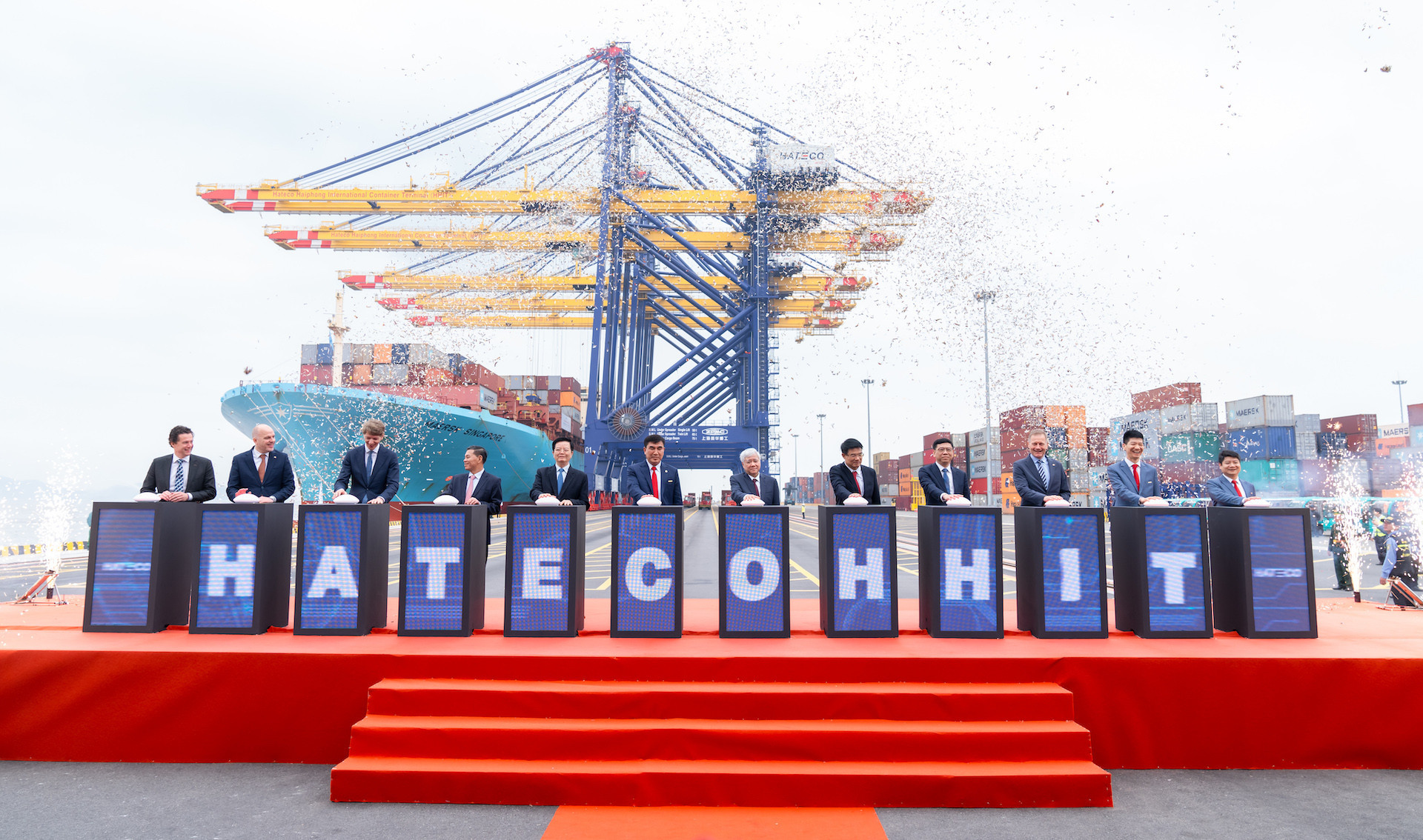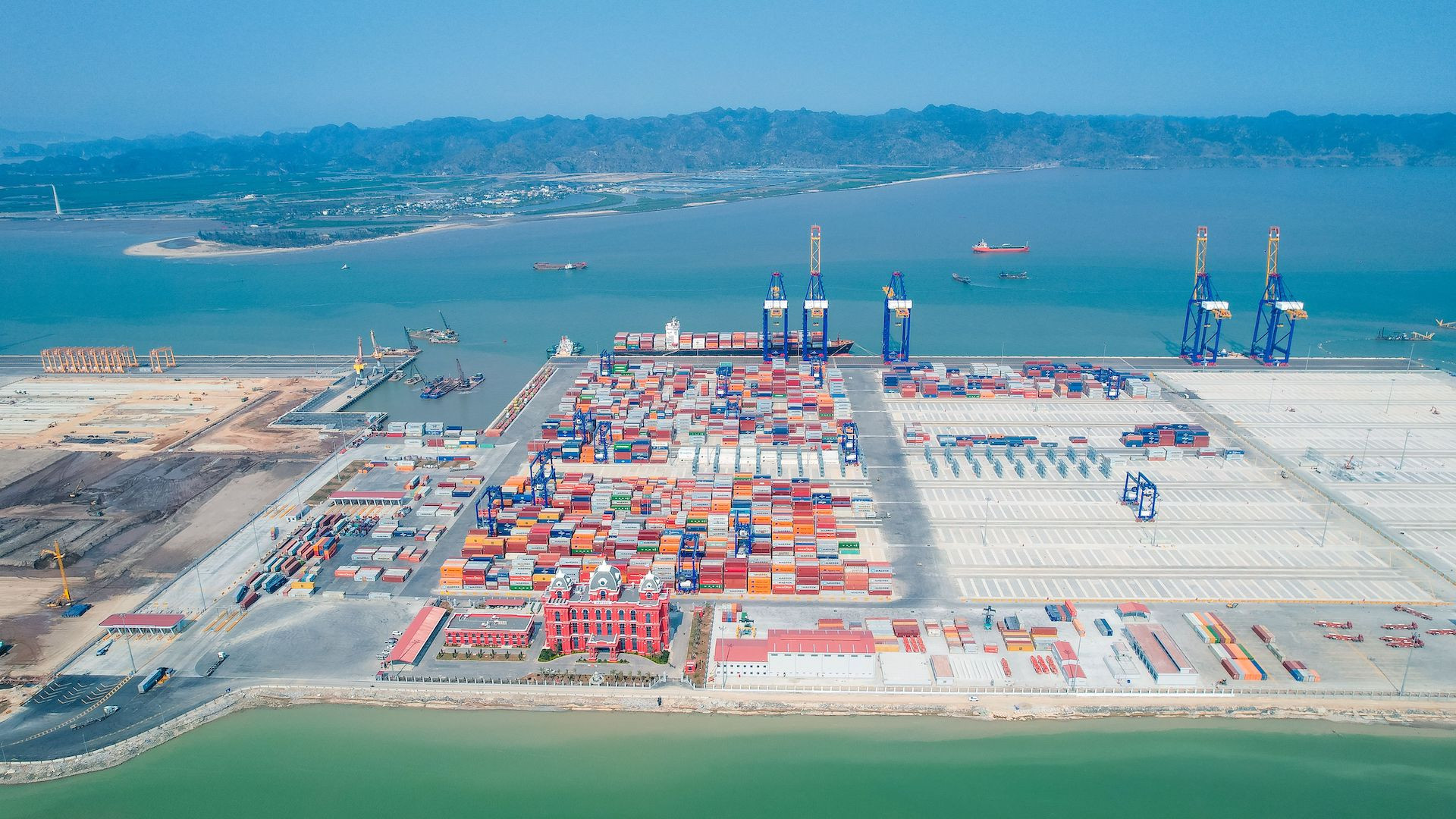On April 5, the Hateco Hai Phong International Container Terminal (HHIT) officially began operations, marking a major milestone in boosting import-export activities in northern Vietnam with direct shipping routes to Europe and the United States.

The project comprises Berths 5 and 6 of the Lach Huyen Port area in Hai Phong and is developed by the Hateco Group under the commercial name Hateco Hai Phong International Container Terminal (HHIT).
Approved by Prime Ministerial Decision 299 in 2021 and adjusted under Decision 186 in 2022, the project is the first deep-water seaport infrastructure development in Vietnam financed entirely by the private sector.
Construction of the project began in August 2022. With over 1,500 workers and the involvement of 100 contractors and consultants, the terminal was completed two months ahead of schedule after more than 30 months of continuous construction.
Spanning nearly 73 hectares, with a 900-meter main berth and a 300-meter barge berth, HHIT is capable of simultaneously receiving two of the world’s largest container ships. With a handling capacity of 2.2 million TEUs per year, it is the largest and most modern deep-water port in northern Vietnam.

Tran Van Ky, Chairman of the Hateco Group Board of Directors, announced that following this northern project, Hateco plans to expand its investments into international port developments in central and southern Vietnam. The goal is to create an integrated, nationwide logistics chain that will facilitate cargo transportation and support the national economy.
Speaking at the inauguration ceremony, Nguyen Duc Tho, Vice Chairman of the Hai Phong People's Committee, affirmed the city’s commitment to encouraging domestic and foreign investors to participate in infrastructure development, especially in the maritime and port sectors within the Lach Huyen area.
Commenting on the role of private investment in maritime infrastructure, Deputy Minister of Construction Nguyen Xuan Sang noted that maritime transport consistently attracts substantial private funding compared to other infrastructure sectors. Currently, public investment accounts for only 14% of the total capital in this field.
Looking ahead, he stated, the maritime sector aims for approximately 95% of investment in port infrastructure to come from private entities.
“The commissioning of Berths 5 and 6 is a clear testament to the Party and Government’s strategic direction in mobilizing private investment for infrastructure, including seaports,” Deputy Minister Sang emphasized.
He also noted that Berths 5 and 6, together with upcoming Berths 3 and 4, will form a six-berth system at Lach Huyen. This aligns with the national master plan and will not only meet the growing transport demands of Hai Phong but also serve the entire northern region of Vietnam.
Hong Khanh